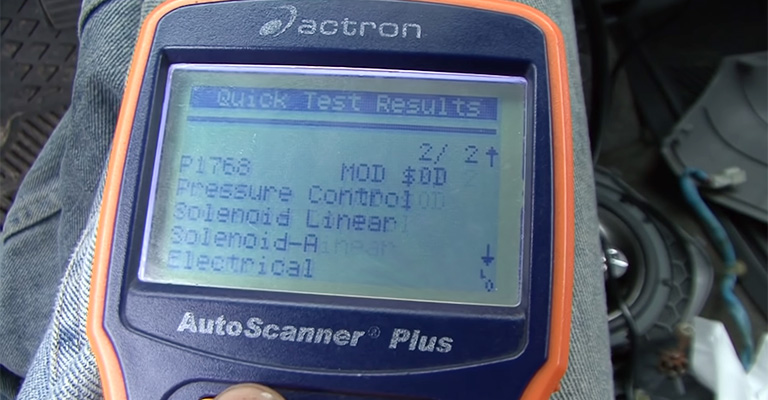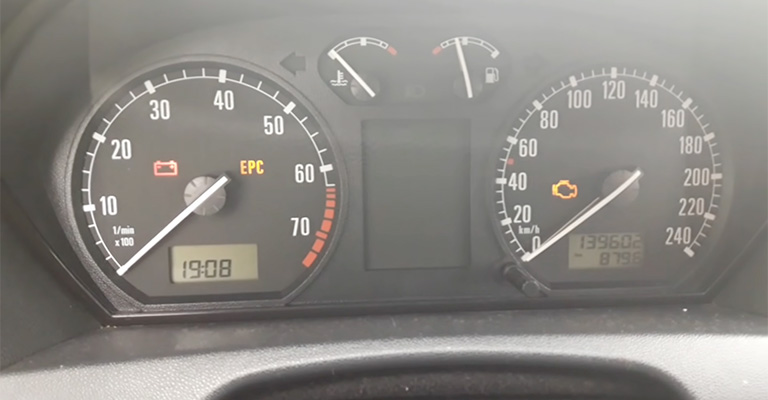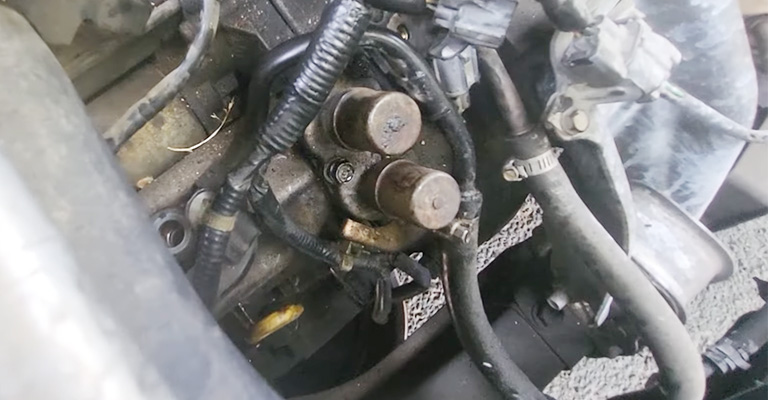The P1768 code is a common issue that Honda vehicle owners may face. This code indicates a problem with the automatic transmission control module (TCM). In this article, we will discuss the meaning, cause, and symptoms of the P1768 code.
The P1768 code indicates that there is an issue with the automatic transmission control module (TCM).
Specifically, this code indicates a problem with the pressure control solenoid valve B, which is responsible for regulating hydraulic pressure within the transmission.

P1768 Honda Code Meaning: A/T Clutch Pressure Control Solenoid Valve Circuit
Shift control and lock-up control are controlled by the A/T clutch pressure control solenoid valve. Powertrain Control Module (PCM) controls the duty cycle that pushes a valve in the A/T clutch pressure control solenoid valve to pressurize fluid so the hydraulic pressure is proportional to the current.
To compensate for the difference between the actual current and the commanded one, the PCM measures the current flowing through the A/T clutch pressure control solenoid valve.
A malfunction is detected if the measured current for the PCM output duty cycle does not fall within a specified range (open or short to ground).
Symptoms Of Honda P1768 Code

The P1768 code in a Honda vehicle can cause a range of symptoms, which can vary in severity depending on the underlying cause and the age and condition of the vehicle. Some of the most common symptoms of the P1768 code include:
- Illumination of the check engine light: The most obvious symptom of the P1768 code is the illumination of the check engine light on the vehicle dashboard. This is the first indication that there is an issue with the transmission control module and should be checked immediately.
- Harsh shifting or slipping of gears: Another common symptom of the P1768 code is harsh shifting or slipping of gears. The pressure control solenoid valve B is responsible for regulating the hydraulic pressure within the transmission, and if it is not functioning properly, the transmission may shift harshly or slip gears.
- Delayed engagement of the transmission: If the P1768 code is caused by a problem with the pressure control solenoid valve B, it can also result in delayed engagement of the transmission. This means that when the driver shifts into gear, there may be a noticeable delay before the vehicle starts moving.
- Transmission stuck in limp mode: In some cases, the P1768 code can cause the transmission to go into “limp” mode. This is a safety feature designed to protect the transmission from further damage, and it restricts the transmission to only a few gears, which can limit the vehicle’s speed and performance.
- Reduced fuel economy: The P1768 code can also cause reduced fuel economy, as the transmission may not be shifting as efficiently as it should. This can result in increased fuel consumption and lower gas mileage.
- Reduced engine performance: Finally, the P1768 code can cause reduced engine performance, as the transmission and engine are closely linked. If the transmission is not functioning properly, it can put extra strain on the engine, leading to decreased acceleration and power.
If you experience any of these symptoms in your Honda vehicle, it is important to have the vehicle checked by a qualified mechanic or dealership.
Early diagnosis and repair of the P1768 code can prevent further damage to the transmission and ensure the safe and reliable operation of your vehicle.
How Serious Is This?

The seriousness of the P1768 code in a Honda vehicle depends on the underlying cause of the issue, as well as the age and condition of the vehicle.
In general, this code indicates a problem with the automatic transmission control module (TCM) and can cause a range of symptoms, including harsh shifting, delayed engagement of the transmission, reduced fuel economy, and reduced engine performance.
If left unaddressed, the symptoms of the P1768 code can worsen over time, potentially causing additional damage to the transmission or engine.
For example, if the pressure control solenoid valve B is not functioning properly, it can lead to overheating or contamination of the transmission fluid, which can cause significant damage to the transmission.
In addition, if the transmission goes into “limp” mode as a result of the P1768 code, it can limit the vehicle’s speed and performance, which can be dangerous in certain driving situations, such as merging onto a highway or passing another vehicle.
What Causes Honda P1768 Code?

The P1768 code in a Honda vehicle is caused by a problem with the automatic transmission control module (TCM).
Specifically, this code indicates a problem with the pressure control solenoid valve B, which is responsible for regulating hydraulic pressure within the transmission. There are several potential causes of the P1768 code, including:
- Faulty pressure control solenoid valve B: The most common cause of the P1768 code is a faulty pressure control solenoid valve B. This component may fail due to normal wear and tear, or due to exposure to excessive heat or contamination from debris within the transmission fluid.
- Damaged or corroded wiring: Another common cause of the P1768 code is a damaged or corroded wiring harness. Over time, the wires within the harness can become damaged or corroded, leading to electrical connectivity issues.
- Faulty TCM: The TCM may also be the root cause of the P1768 code. If the TCM fails or malfunctions, it may send incorrect signals to the pressure control solenoid valve B, leading to pressure regulation issues within the transmission.
- Mechanical issues within the transmission: In rare cases, the P1768 code may be caused by a mechanical issue within the transmission itself. For example, a damaged valve body or worn clutch pack may cause hydraulic pressure regulation issues, leading to the P1768 code.
It is important to have the underlying cause of the P1768 code diagnosed accurately, as different causes may require different repair procedures.
A qualified mechanic or dealership can perform diagnostic tests to determine the underlying cause of the P1768 code and recommend appropriate repair or replacement procedures.
How To Fix The P1768 Code?
To fix the P1768 code, the underlying cause of the issue must be identified and addressed. Here are some potential fixes:
Repair or replace damaged wiring: If the P1768 code is caused by a damaged or corroded wiring harness, a qualified mechanic can repair or replace the affected wires.
Replace faulty pressure control solenoid valve B: If the pressure control solenoid valve B is faulty, it will need to be replaced with a new one.
Replace faulty TCM: If the P1768 code is caused by a faulty TCM, it will need to be replaced with a new one.
Repair or replace transmission: In rare cases, a mechanical issue within the transmission may be causing the P1768 code. In this case, the transmission may need to be repaired or replaced.
Conclusion
The P1768 code can be a severe issue that can affect the performance and safety of a Honda vehicle. It is essential to have the code diagnosed and repaired by a qualified mechanic or dealership as soon as possible to ensure the safe operation of your Honda vehicle.
By repairing or replacing damaged wiring, replacing the faulty pressure control solenoid valve B or TCM, or repairing or replacing the transmission, Honda vehicle owners can address the underlying cause of the P1768 code and get their vehicle back on the road in a safe and smooth operating condition.

Leave a Reply